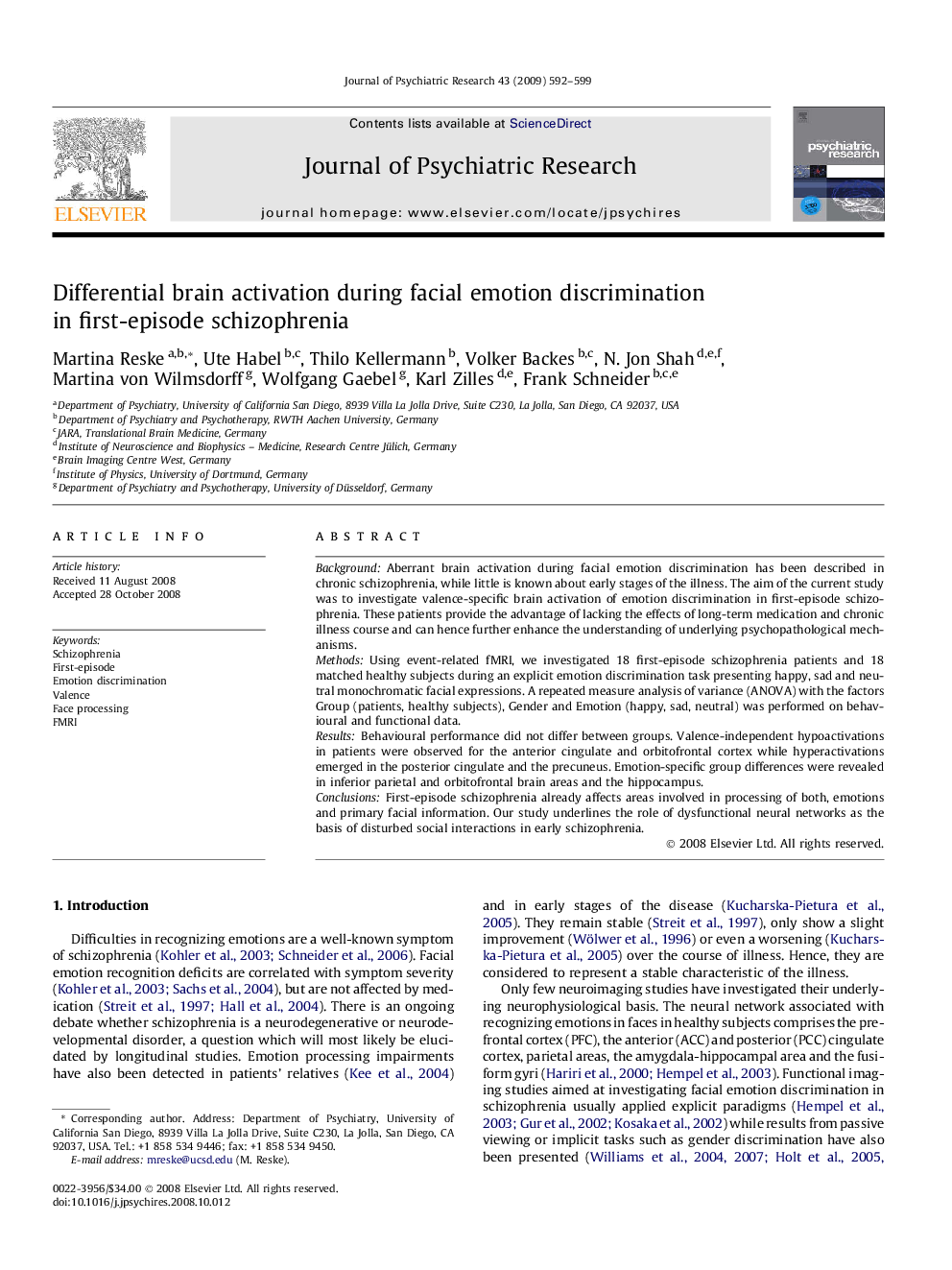| Article ID | Journal | Published Year | Pages | File Type |
|---|---|---|---|---|
| 326681 | Journal of Psychiatric Research | 2009 | 8 Pages |
BackgroundAberrant brain activation during facial emotion discrimination has been described in chronic schizophrenia, while little is known about early stages of the illness. The aim of the current study was to investigate valence-specific brain activation of emotion discrimination in first-episode schizophrenia. These patients provide the advantage of lacking the effects of long-term medication and chronic illness course and can hence further enhance the understanding of underlying psychopathological mechanisms.MethodsUsing event-related fMRI, we investigated 18 first-episode schizophrenia patients and 18 matched healthy subjects during an explicit emotion discrimination task presenting happy, sad and neutral monochromatic facial expressions. A repeated measure analysis of variance (ANOVA) with the factors Group (patients, healthy subjects), Gender and Emotion (happy, sad, neutral) was performed on behavioural and functional data.ResultsBehavioural performance did not differ between groups. Valence-independent hypoactivations in patients were observed for the anterior cingulate and orbitofrontal cortex while hyperactivations emerged in the posterior cingulate and the precuneus. Emotion-specific group differences were revealed in inferior parietal and orbitofrontal brain areas and the hippocampus.ConclusionsFirst-episode schizophrenia already affects areas involved in processing of both, emotions and primary facial information. Our study underlines the role of dysfunctional neural networks as the basis of disturbed social interactions in early schizophrenia.
